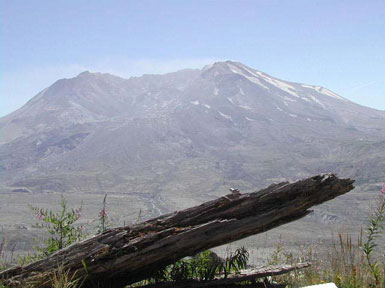
2002-08-15: Mount St. Helens
Mount St. Helens erupted on May 18, 1980. It sent volcanic ash and steam to a height of 15 miles. The mountain itself lost 1,300 feet of elevation as a result of the blast. This view of the mountain is from Johnston Ridge Observatory which is on the northwest side of the crater and affords one a good view of the lava dome within.
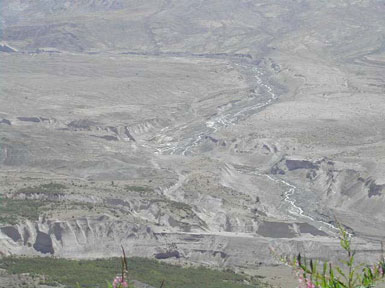
2002-08-15: Mud Flows
The Mount St. Helen was different than This volcano was triggered by a large earthquake which caused a huge avalanche. This was followed by a lateral explosion (it blew out the side). The next event which took place was the spewing hot ash and pyroclastic flows which raced down the north flank of the volcano. The result was this pumice plain which at first was compared to a moonscape. Over the years, vegetation has begun to reappear on the pumice plain.
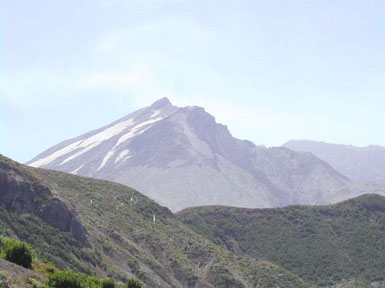
2002-08-16: View From Windy Ridge
Mount St. Helen as viewed from Windy Ridge which is northeast of the mountain. Believe it or not, from this vantage point we are actually closer to the volcano.

2002-08-16: Spirit Lake
Spirit Lake was totally changed by the eruption. A large portion of the north flank of the volcano collapsed into the lake causing a "tidal" wave to wash 800 feet up the slopes north of the lake. Hot pyroclastic flows traveled from the crater into the lake and heated the water to over 180 degrees. Thousands of trees were blasted into the lake and formed the log mat or raft you see here. Today the lake is some 300 feet deeper than it was prior to the eruption.
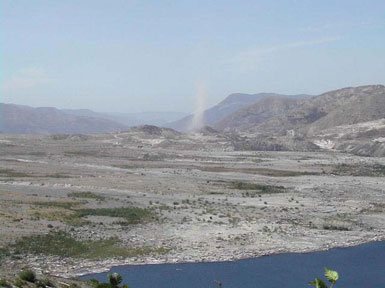
2002-08-16: Another Dust Devil
Looking over the pumice plain and Spirit Lake from Windy Ridge, we noticed a huge dust devil forming on the plain just below Johnston Ridge. The small hills on the plain are actually part of the top of Mount St. Helen and are called hummocks.
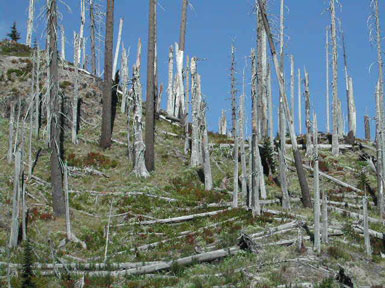
2002-08-16: Effect of the Lateral Blast
The lateral blast caused the release of super heated steam and ash which had a devastating effect on the trees in the area. Here you see what remains of a forest of pines.
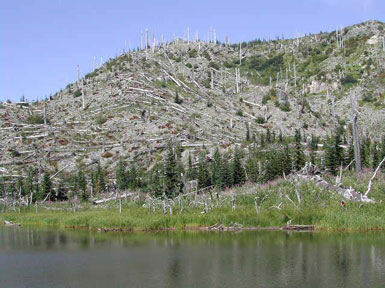
2002-08-16: Meta Lake
Meta Lake has an incredible story all its own. Evidently the lake was still frozen and covered with snow. Many animals, plants and critters who were hibernating here or swimming/living under the ice actually survived the blast. This was one of the areas that came back to life very quickly though as you can see, the forest surrounding the lake wasn't as lucky.
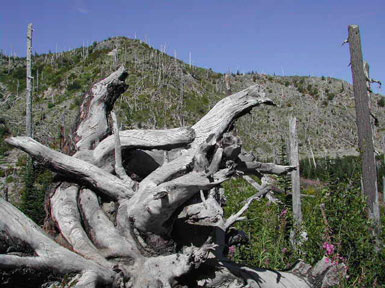
2002-08-16: Remains of a Tree
The roots of a huge tree which was taken down by the blast.
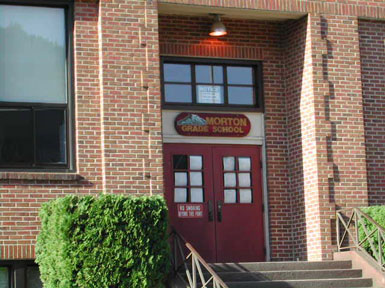
2002-08-16: Morton, Washington
My very own school in my very own town - Morton, Washington